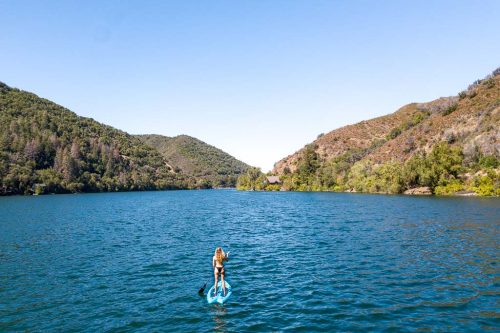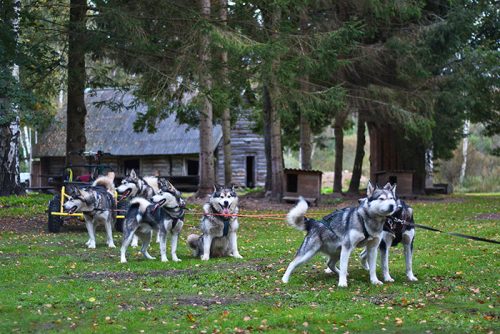With more and more destinations, tour operators and activities focussing their concentration on responsible tourism, it’s important to acknowledge the places that are doing it right. All over the world countries, cities and companies are putting huge amounts of effort into protecting the environment, the local communities and the animal population.
How you choose to spend your money while traveling has a huge impact on the future of travel and the people, places and animals that live there. So if you’re traveling in 2023 and want to have a positive impact on the world…. you’ve come to the right place.
We reached out to some of the top responsible tourism bloggers to ask them for their recommendations on the best sustainable travel destinations for 2023. From preserving the ancient cultures and traditions of countries in Bhutan, Peru and Chile, to protecting the environment in Indonesia, Palau and Germany. From animal conservation in Kenya, to environmental and cultural preservation in Costa Rica, this post covers it all.
Bhutan
Ian from Where Sidewalks End
Without a doubt, Bhutan’s tourism initiatives have put it amongst the top responsible and sustainable tourism destinations in the world. Predominantly isolated from the world, Bhutan has remained relatively unchanged as the rest of the world became more globalized. Something that makes Bhutan incredibly unique, is their strategy to help preserve their culture through tourism.
Every guest to Bhutan pays a daily tariff while visiting the country. Depending on the season, this will be either $200 or $250 USD per day (about the same as a night in a hotel in New York). This tariff covers all hotels/home-stays, transportation, meals and guides during a visit. Only upgrades to hotels, or additional activities will come at an extra cost. From there, 30% of the tariff also goes back into environmental preservation, community development, such as free health care for all residents and visitors, as well as community based tourism projects setup for families to host guests during your stay.
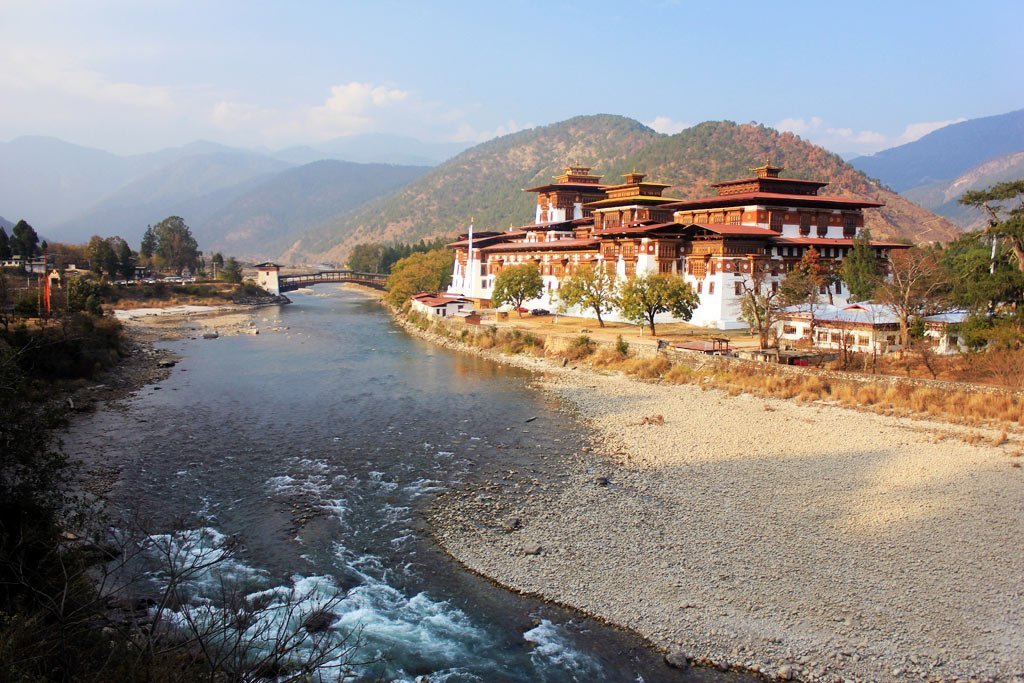
This type of tariffed payment system ensures fair, livable wages to all those involved and keeps a high standard (3 star hotel and up) for all guests to the country. It also helps protect their natural environment, with little social impact and an emphasis on culture. This is what the best responsible tourism operators try to achieve in terms of sustainability, and yet it’s being regulated by the government! It’s also a nice bonus that the country is so rich in history, culture and natural beauty!! Definitely an innovator and role model for other countries to potentially follow suit in, Bhutan should be high on your list as a responsible tourism destination!
Alay Region, Kyrgyzstan
Audrey from Uncornered Market
A destination we recommend for responsible tourism experiences is the Alay Region in southern Kyrgyzstan, at the crossroads of Tajikistan, China and Uzbekistan. Located in the stunningly beautiful Pamir-Alay mountain range, including Lenin Peak at 7,134 meters/23,406 feet, the Alay region is great for travelers who are interested in trekking, horseback riding or other outdoor activities combined with traditional Kyrgyz nomadic culture along the way.
The region not only provides some unique travel experiences, but it also does so in a way so that local people in the regional communities benefit as well from tourism money. For examples, local families run the guest houses and yurt stays, food is locally sources and home cooked, and guides are local from the region.

Although beautiful, the Alay Region is not an easy place to live, however, as agriculture is difficult and there isn’t a lot of industry or other businesses that create jobs. Community Based Tourism (CBT) has been strong and active in that region, trying to involve villages and rural communities so that tourism development is inclusive and benefits local people in the region.
Last year, Visit Alay, the local CBT branch in Osh, worked on a project to mark and map new trails in the region. The goal: open up more trekking routes to travelers to spread them around the region more while inviting and training local families if they want to host travelers in home/yurt stays or offer home-cooked meals. In addition, the additional trekkers to the region provide more income generation opportunities for local trekking guides and other service providers (horse handlers, etc.). Read more on why trekking in the Alay Region is such a fulfilling responsible tourism activity.
Sumatra, Indonesia
Luke from Wild Sumatra
Sumatra is easily the most exciting and diverse of Indonesia’s islands. From mighty volcanoes and virgin rainforests to hidden beaches and verdant rice paddies, to ancient temples and vibrant cultures, Sumatra really has it all.
Despite this abundance of riches, the island is rarely on people’s radar. Sadly, when it does make the news, it’s usually not for good reasons. Thanks to the world’s insatiable appetite for cheap commodities like palm oil and wood products, the rainforests of Sumatra have been under pressure for a long time, with the island losing 36% of its forest cover from 1990-2010. Combined with the misguided hunger for wildlife parts used for alternative medicine, the situation is dire.
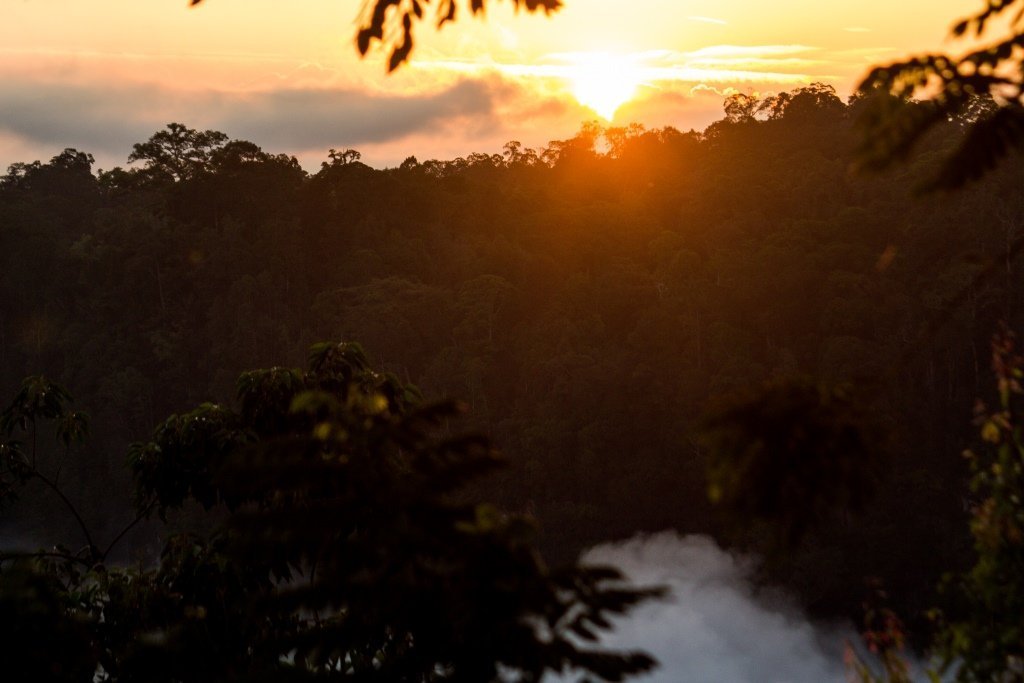
But there is good news. Across the massive island, roughly the same size as the whole of Thailand, there are numerous passionate people working to stem the tides of destruction. And many are using ecotourism to do it; here are a few highlights:
Green Hill in Bukit Lawang, North Sumatra, was founded by Mbra and Andrea over 25 years ago. One of the few operators in the region who are truly committed to conservation. They have strict rules that need to be followed by both guides and guests, which includes absolutely no feeding of orangutans and other wildlife. They also run a Nature Club for kids in the community, as well as a more off the path community-based project in the village of Kuta Langis, which is a great alternative to the busyness of Bukit Lawang.
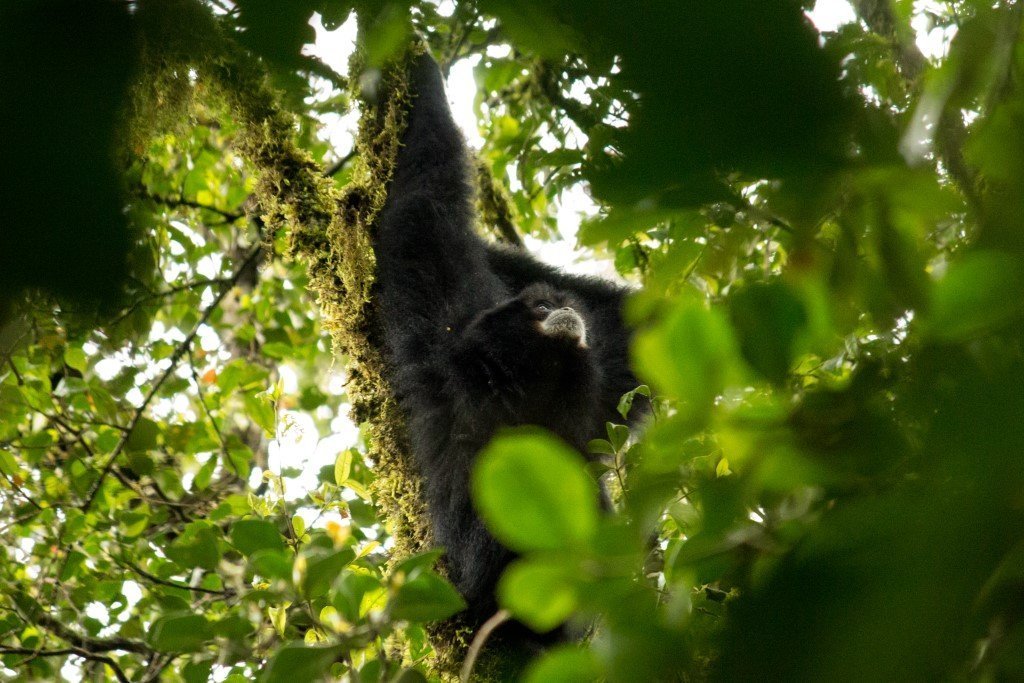
On the other side of the island, in the province of West Sumatra, sits Rimba Ecolodge. Run by Reno and Nad, this is a perfect location to unplug and relax on an isolated beach – with amazing snorkeling just off shore, and a vibrant rainforest steps from the sand. The very basic bungalows are made from sustainable materials like bamboo, palm, and rattan, and the project supports education and waste management initiatives in the nearby villages. Their activities have also led to the creation of the Muaro Duo nature reserve in the bay where Rimba sits, preserving and protecting it from fishing and other harmful practices.
These initiatives and more (like ours at Wild Sumatra!), are working to provide viable economic alternatives to the siren call of deforestation. We believe that communities are healthier and more sustainable when nearby forests and seas remain intact and filled with life. Visiting Sumatra and choosing responsible tourism operators is one of the most effective ways you can say no to the continued destruction of the natural world, while having an adventure of a lifetime.
Chile
Steph from Worldly Adventurer
When you think of Chile, the sharp peaks of the Patagonian landscapes might well spring to mind. Thanks to the work and investment of billionaire philanthropist, the late Doug Tompkins, and the Chilean government, much of this wilderness is now safeguarded. 2018 saw the creation of the Route of the Parks: a squiggle of 2,800 kilometres of protected land made up of 17 national parks, stretching from Puerto Montt down to the very tip of the South American continent.
The finest and most accessible are those along the Carretera Austral – the only road through northern Chilean Patagonia. Here parks such as Pumalín and Patagonia are leading the responsible fray with outstanding day and multi-day hiking routes and infrastructure, plus initiatives to “rewild” the landscapes – including returning the puma and ñandu (a type of emu) to their natural habitats.

But responsibly tourism goes beyond the country’s approach to its treasured wildernesses; cultural tourism is also on the rise. The Mapuche, the ancient indigenous group that has long inhabited the south of Chile, are beginning to open their doors to tourism.
One of the communities doing just that is Llaguepulli. You can spend the night in a traditional ruka (a wooden dwelling covered with layers of waterproof Peruvian feathergrass), join the machi (shaman) around the hearth to learn about Mapuche spiritual beliefs and take cookery classes or study the properties of medicinal plants in the community’s organic garden. All of the money from your stay goes directly into the community, providing a much-needed, and sustainable source of income for the local families.
If you need an English-speaking guide, the excellent Chilean-based Travolution, who specialize in responsible tourism trips across the country, organize tours here and to other Mapuche communities in the region.
Palau
Abbie from Speck on the Globe
Palau may be a small island in the western part of the Pacific Ocean, but in terms of responsible tourism they are making major strides. The main achievement for Palau has been its attention towards marine conservation. The government of Palau created a sanctuary that contains nearly 80% of the country’s waters, protecting the eco system from commercial fishing expeditions. When first arriving into Palau, visitors to the islands need to pay a sustainability fee as part of their visa entrance. Tourists also need to sign the Palau Pledge, a commitment to being mindful about the environment.
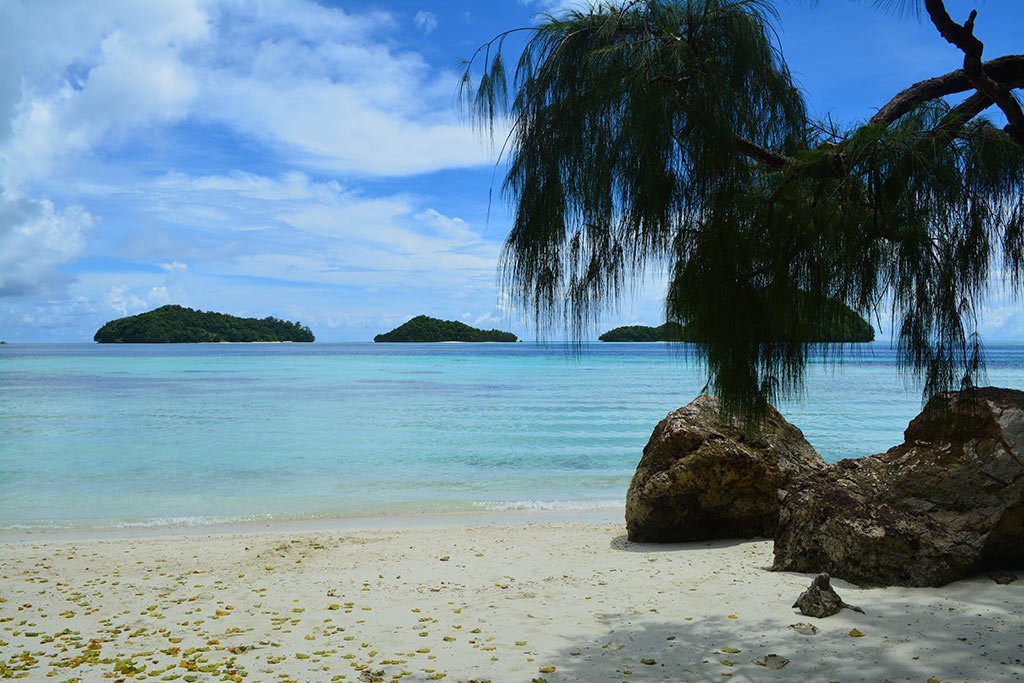
Palau puts their environment first, and the needs of tourists second. One of the most popular activities is visiting Jellyfish Lake, a lake in the Rock Islands that had thousands of stingless jellyfish. In the past the jellyfish began to vanish and for several years the government closed the lake in order to research for the jellyfish population was in decline. After some time the jellyfish population began to stabilize and they have since reopened the lake for visitors to enjoy.
You can really tell the difference in the level of environmentally friendly initiatives in Micronesia compared to other islands in the Pacific. When you go snorkeling or diving, you immediately see clean waters void of debris and the beaches are free from trash. The goal of the Palau government is ultimately to have a “high yield, low impact” approach, which would entice a smaller group of high-spending, environmentally focused tourists.
Masai Mara Conservancies, Kenya
Bret and Mary from Green Global Travel
Kenya is home to one of the planet’s greatest natural spectacles, Africa’s Great Migration. Every year millions of wildebeest, zebras, and various antelope species make their way from Serengeti National Park in Tanzania to Kenya’s Masai Mara National Reserve. Seeing this incredible migration is on the bucket list of many wildlife loving travelers. But the truth is, the government-protected reserve isn’t the only place to see it, nor is it necessarily the best.
A study funded by World Wildlife Fund (conducted from 1989 to 2003) found that the Maasai Mara had seen a sharp decline of ungulates– the hoofed animals that lions, leopards, cheetahs, and hyenas rely on for food– due to decades of human encroachment and poaching. The reserve also saw a 67% to 80% decline in populations of impala, giraffes, and warthogs.
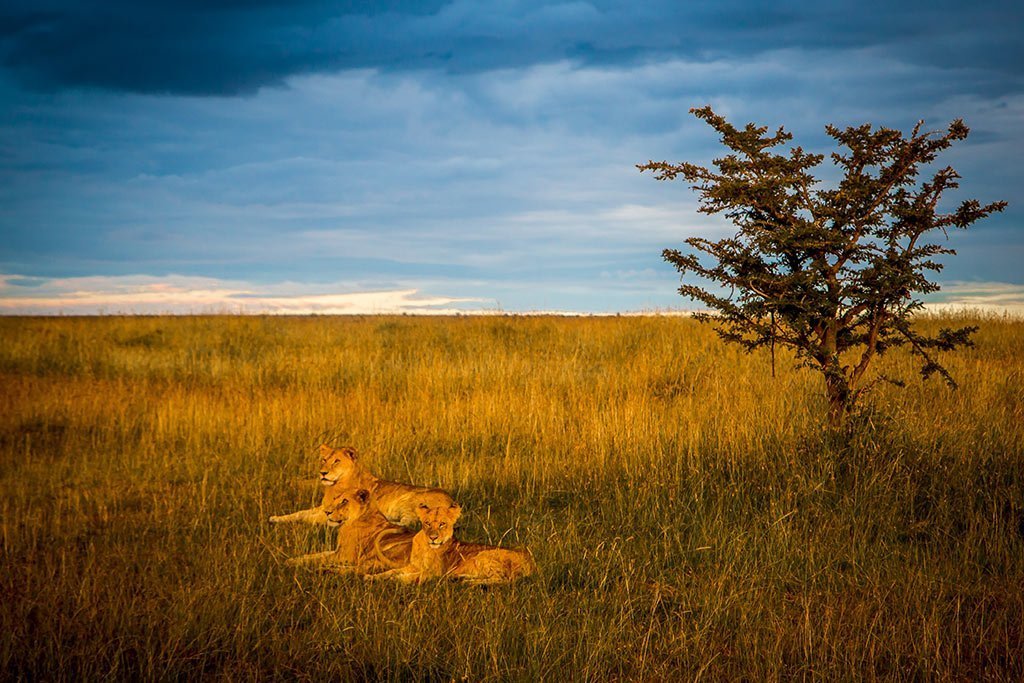
Even worse, the indigenous Maasai lost the rights to graze on their ancestral lands, with around 40,000 people in Tanzania forced to relocate after their land was sold to foreign investors in 2009. Fortunately, private tour operators began working with community leaders to help the Maasai develop a more sustainable model for community-based conservation in the Maasai Mara.
According to Gamewatchers Safaris & Porini Camps Managing Director Mohanjeet Brar, “60 to 70% of Kenya’s wildlife is found outside protected national parks and reserves.” Led by founder Jake Grieves-Cook, the former chairman of the Ecotourism Society of Kenya, the company has been a pioneer of the community conservancy concept in Kenya for more than two decades.
Their low-impact Porini Mara and Porini Lion camps offer guests near-exclusive access to the 18,700-acre Ol Kinyei Conservancy, 33,000-acre Olare Motorogi Conservancy, and 50,000-acre Naboisho Conservancy. Each camp has a maximum of 12 tents, and each tent funds the protection of 700 acres of habitat. Approximately 95% of their staff is from local Maasai communities. The Maasai are received over $1.5 million from the conservancies in 2018, with more than 1,000 families receiving monthly payments.
What this means for guests is more wildlife (we saw tons of predators and huge herds of elephants, impala, hippos, zebra, wildebeest, etc.), fewer crowds, and an exclusive, eco-friendly option for seeing what is arguably the greatest show of natural beauty on Earth.
If you’re looking to travel to Kenya don’t forget your visa! While Kenya offers tourist, business and transit visas to most countries, you will need to apply and secure your visa before entering the country. In fact, most airlines won’t let you travel to Kenya unless you have your appropriate visa, so be sure to organize it in advance. Luckily the online application and requirements for a Kenya eVisa is pretty straight forward and once approved you have three months to enter the country. On both the tourist and business visa you’ll have three months within the country, while the transit visa only gives you 72 hours.
Berlin, Germany
Claudi from GreenMe Berlin
Berlin is a paradise for every greenie, dreamer and free spirit – liberal, unconventional and always up to challenge the status quo. And with one third of the city covered in green, nature is everywhere – but you don’t need to hug trees to dive into its thriving eco culture.
Roaming Berlin’s creative neighborhoods, you can explore permaculture gardens hidden in local backyards, relax in lush community gardens that let you pick your own tea, host beekeeping and participate in upcycling workshops. For the shoppers, you can visit package-free stores to stock up on zero waste travel gear, eat delicious dumplings made from rescued food or join a cooking classes with refugees communities. For the more active explorer you can rent a recycled bike and ride around Berlin’s abandoned Tempelhof Airport, which has been transformed into the city’s largest public green space. In short: you can have heaps of fun, while supporting good causes.
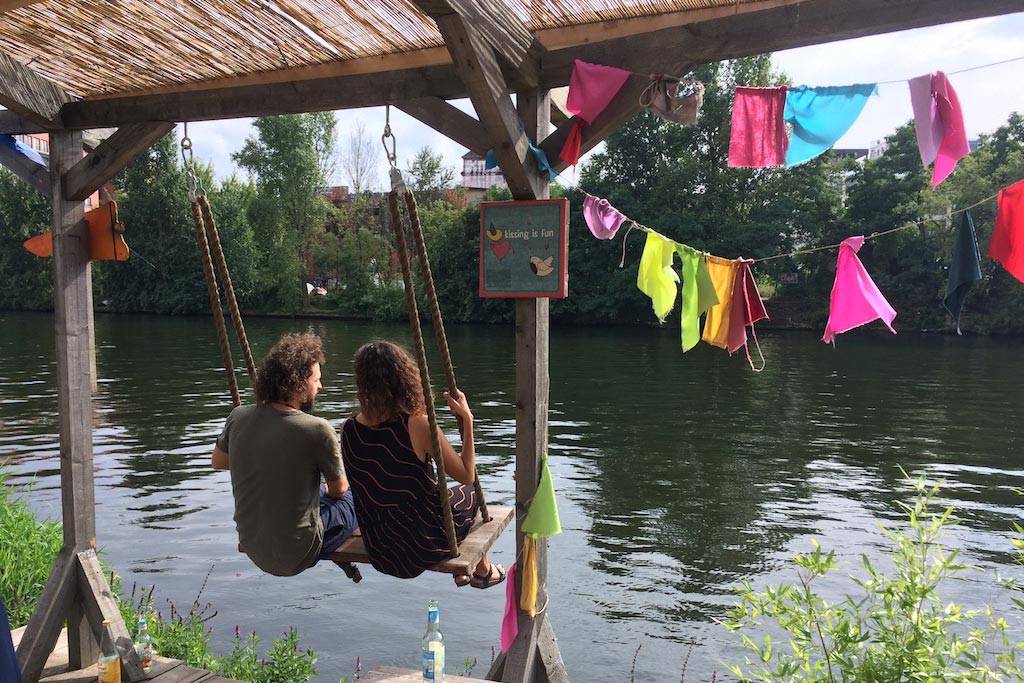
Berlin is special because it is the people who make change happen; genuine, passionate folks with a “just-do-it” mentality. There are lots of bottom-up initiatives and social startups and the community spirit is high. Being surrounded by this vibe makes you feel like you can actually make a difference, even if you’re only in town for a couple of days.
If you don’t want to explore alone, join one of the various green urban tours: from Green Fashion Tours, to Changemaker Tours focussing on social entrepreneurship, to Querstadtein where homeless people and refugees guide through “their” city, to our GreenMe Kiez Tours.
Change is happening on all levels; the tourist board supports Berlin’s sustainable scene by actively placing the topic in international travel media. They also built a “Going Local” app to counter overtourism and divert tourist streams, organize park clean-ups and the initiative Circular. Berlin also works on a series of workshops to educate tourism stakeholders on zero waste practices.
Lost City, Colombia
Becki Enright from Borders of Adventure
Trekking to the Lost City (La Ciudad Perdida) means being able to visit an ancient archaeological site nestled up in the Sierra Nevada mountain region of northern Colombia. It was built by the Tayrona people, and dating to approximately 800 AD (older than Machu Picchu), it is only accessible on foot.
Because of the long trek to get to the site, it’s not a destination that suffers from any form of over-tourism. However, the trek route passes through indigenous land, so it’s important to choose a Lost City tour operator that respects the wishes of the Wiwa and Kogi people, who live within this region. For instance, when choosing a guide, it’s possible to have a member of the Wiwa community as your guide.
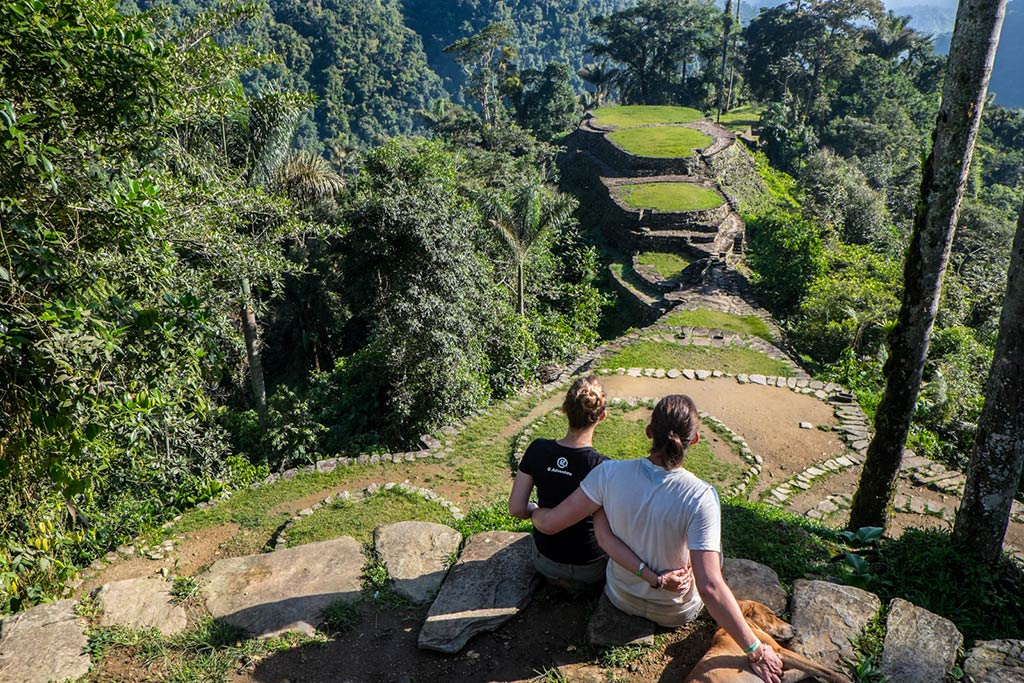
Adding to the responsible tourism footprint in this region, I choose to trek with G Adventures who have a partnership with the Wiwa community for the Lost City Trek. Thrugh this arrangement, travelers embark on an exclusive extra fifth day of trekking through an area of the Sierra Nevada jungle that no other group gets to go on. This more remote exploration leads to a Wiwa community, where you have your final lunch as a group.
Your time here supports the community’s kitchen, where locals are trained in hospitality (since many of the men have become trekking guides) and where travelers get to understand the remote communities and the struggles they face when trying to balance tourism with the preservation of traditions.
Luang Prabang, Laos
Ketki from Explore With Ecokats
In the last few years Laos has seen a large increase in the amount of effort put towards responsible tourism. In the past, tubing was synonymous with Laos and the party scene, especially in Vang Vieng. Vang Vieng was a major party location for backpackers, who would rent tubes from locals and spend the day floating down the river, drinking at various shanty bars they passed along the way. Due to more than two dozen tourist deaths, regularization was finally passed to shut down these unauthorized shanty bars, that were providing alcohol, and at times drugs, to tourists.
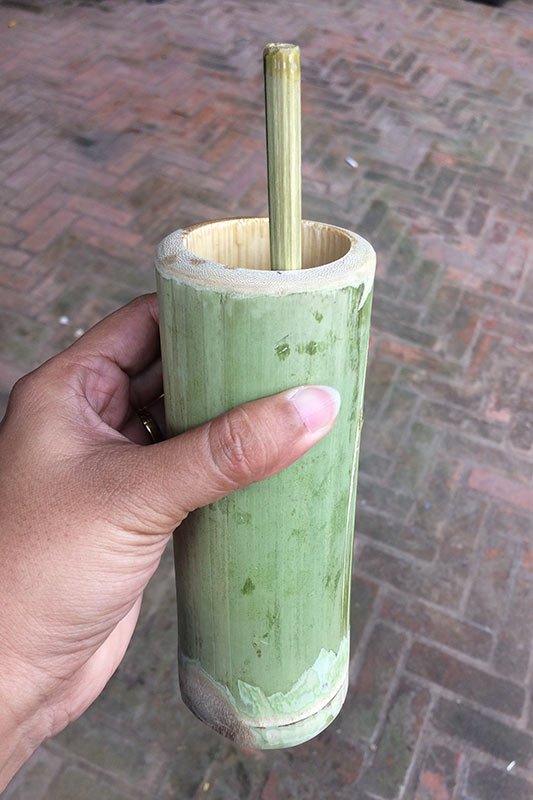
Laos, since then, has completely changed its tourism scene and is focusing on more ethical and sustainable tourism. The focus is genuinely targeted not only for the tourists, but also for the eco development of the region and local communities. One of those ares to receive an increased focus is Luang Prabang, which is quickly becoming a top responsible tourism destination in Southeast Asia. As a UNESCO World Heritage Site, Luang Prabang has been able to implement policies and procedures to cater to the extra tourist numbers that visit the city.
Luang Prabang has taken serious initiatives towards reducing plastic waste. Every public toilet has cloth towels for wiping hands, instead of tissue papers. Most hotels use glass bottles for drinking water instead of plastic bottles and have replaced small plastic shampoo bottles with refillable ceramic ones. Many hotels and local shop owners are also promoting organic farming and even growing local food in their premises. The authorities have even installed water dispensers to encourage tourists to fill bottles instead of buying new ones, with all the plastic packaging material being recycled once used.
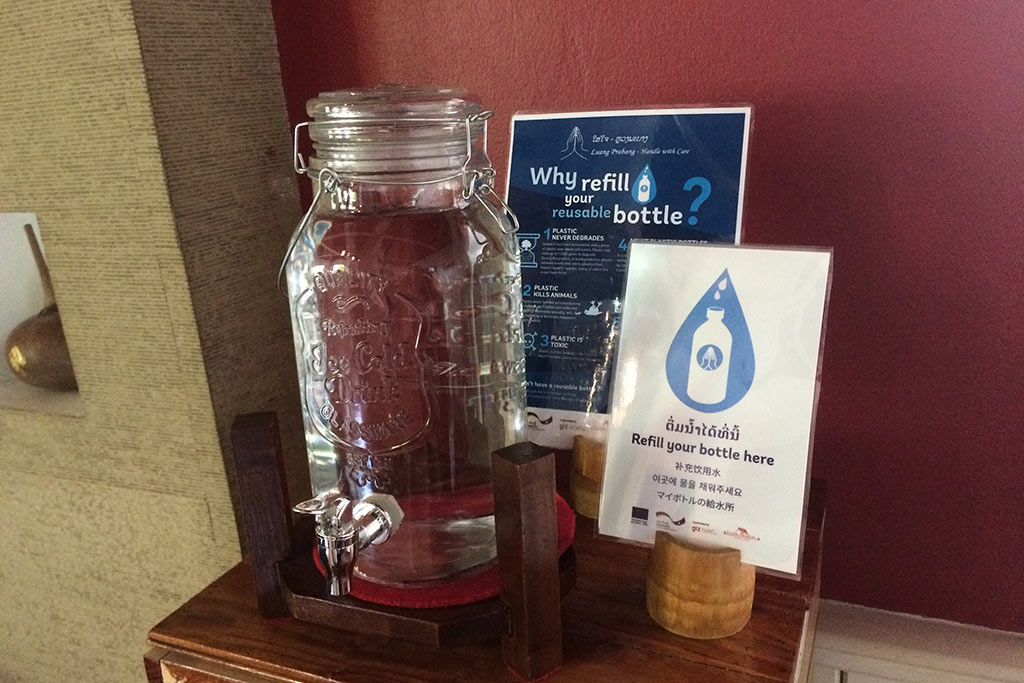
In order to make sure these initiatives are known to locals, educational seminars are conducted in the town and training workshops are conducted for hospitality staff. Clean up campaign involving tourists are also conducted in the town. For tourists visiting Luang Prabang, who want to immerse themselves in the art and culture of the city, they can learn about its history and spend a day with the local Laotian women who weave beautiful patterns in the fabric.
Luxembourg
Margherita from The Crowded Planet
Luxembourg is a very underrated destination, usually seen as a place where only businesspeople and politicians travel, when in fact, the country has a lot to offer to history, nature and adventure lovers! Luxembourg is also pioneering the way for European countries in its efforts to promote eco-travel and responsible tourism.
One of those eco-travel initiatives is an excellent public transport system that is free, making Luxembourg the first country in the world to offer free public transport. There’s also a good system of bike lanes throughout the entire country, meaning you can cut down on your carbon footprint when exploring Luxembourg.
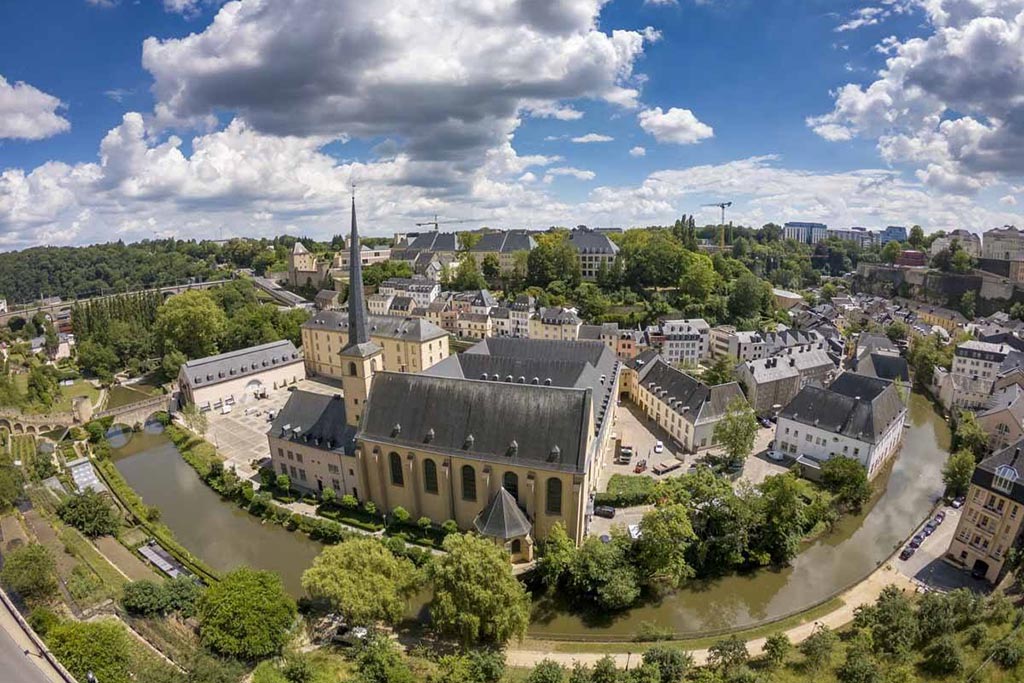
Those who enjoy hiking might be surprised to find out that there’s a great long-distance hike in Luxembourg, the Mullerthal Trail. It traverses the region also known as Little Switzerland, with beautiful cliffs and rocks formations. The trail can be hiked in 7-10 days, depending on how many ‘add ons’ one chooses to do. It is also easy to break the hike in stages and get to the trailhead by public transport. Hiking is a great, low impact outdoor activity that doesn’t put any strain on the environment.
Costa Rica
While the number of sustainable tourism destinations is increasing around the world, one of the first places to embrace traveling responsibly was undoubtedly Costa Rica. Over 70 years ago, Costa Rica’s president abolished the country’s military, allowing military spending to be redistributed into conservation. Since then, Costa Rica has become a leader in environmental protection. The country is covered in a richly biodiverse rainforest, and the government restricts development on over 25% of its land through protected parks and wildlife reserves. Additionally, over 95% of the country’s electricity comes from green energy.
Costa Rica’s commitment to its environment has paid off, making it one of the top ecotourism destinations in the world. Their protected rainforests are perfect for outdoor adventure travel, including ziplining, white water rafting and incredible hiking in Costa Rica. Wildlife protection draws in tourists interested in bird watching and spotting endangered species like the quetzal, tapir and ocelot.
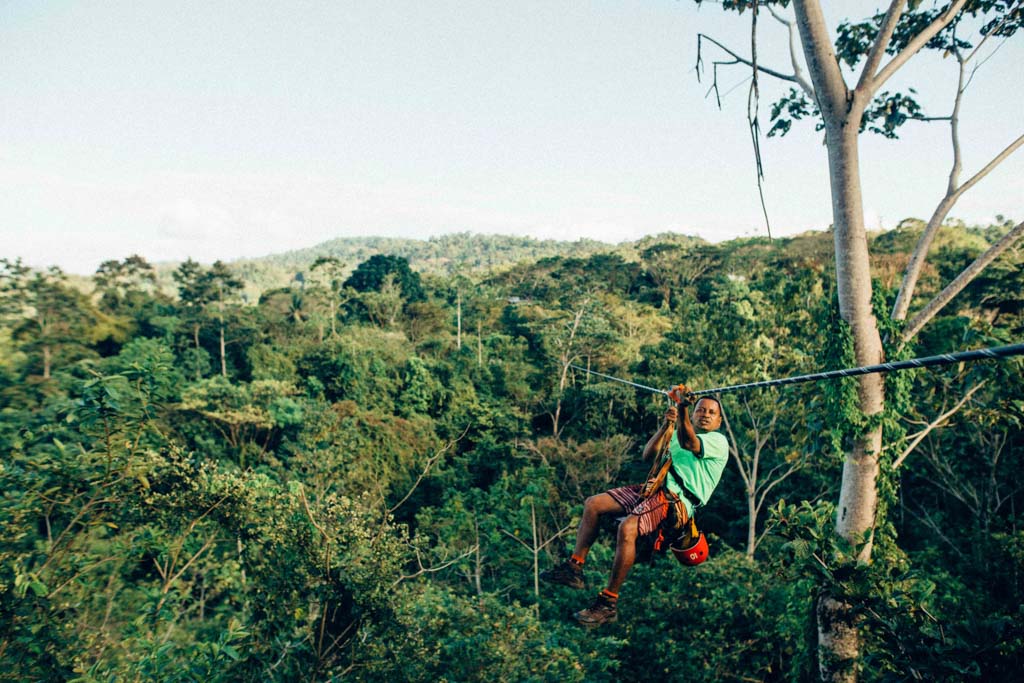
While the country has made incredible strives in environmental protection, not all its people have prospered. The indigenous communities within Costa Rica only won the right to vote in 1994, leaving them out of many important decisions regarding their land. To improve the situation of the local indigenous, several responsible tourism projects have popped up.
The Bribri women in the village of Yorkin, near Puerto Viejo, have established their own community tourism group. With this group they’ve created an opportunity to increase their income, allowing them to send their children to school and improve their family’s livelihood. Tourists can come into the community and see their craft making, observe local life and visit their rainforest. For more information on the Bribri indigenous artisan tours, visit the Stibrawpa Association.




